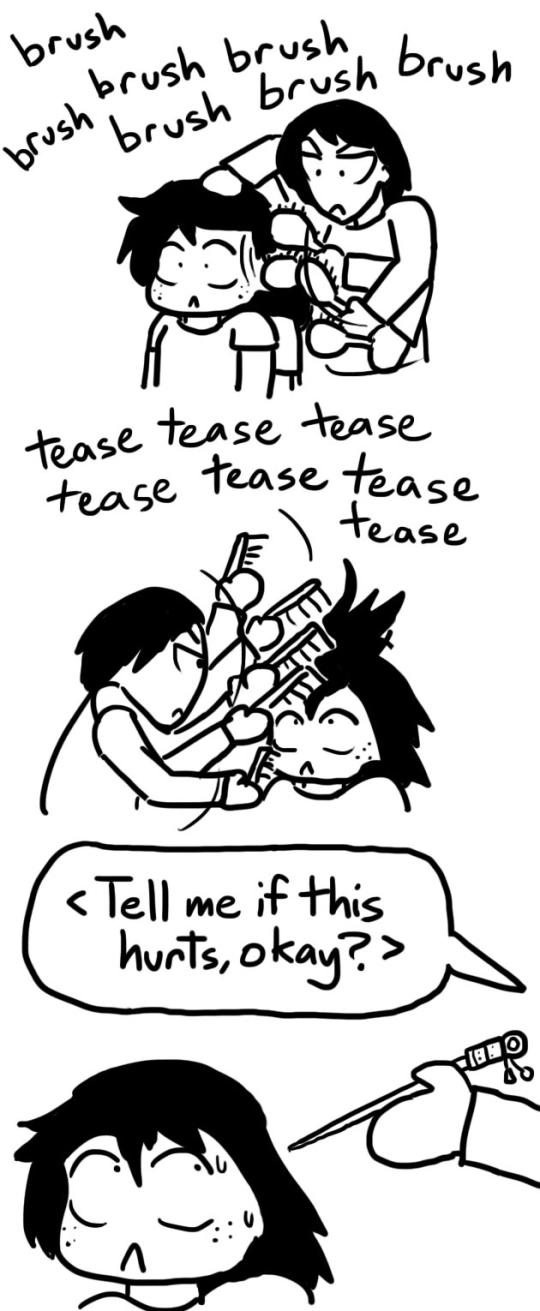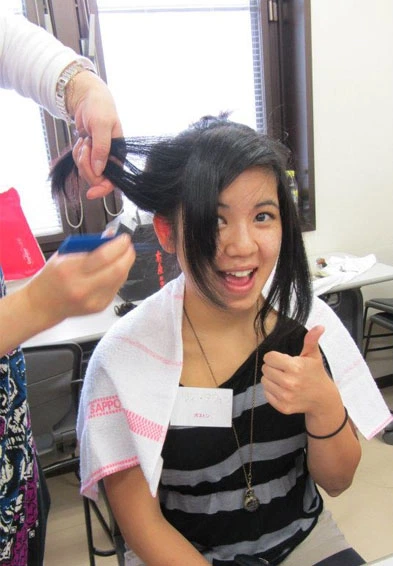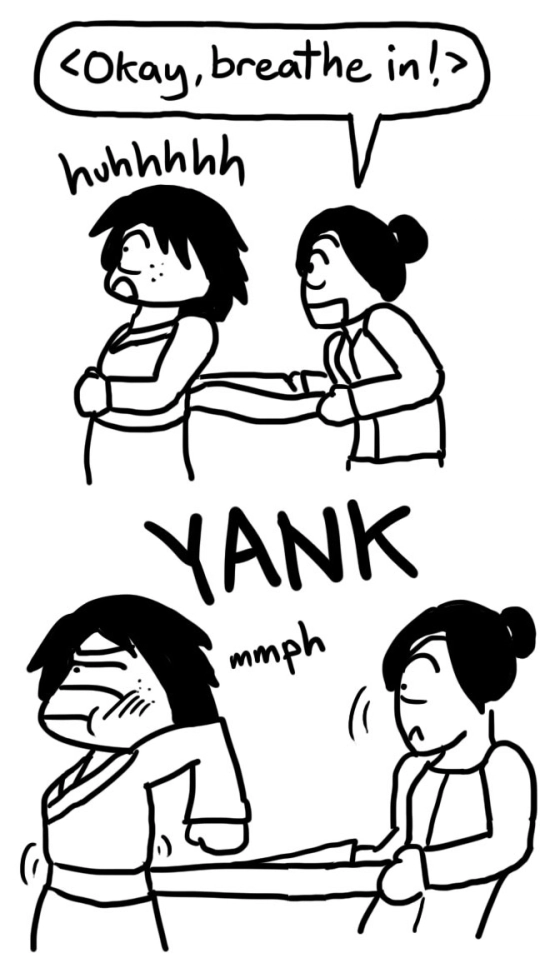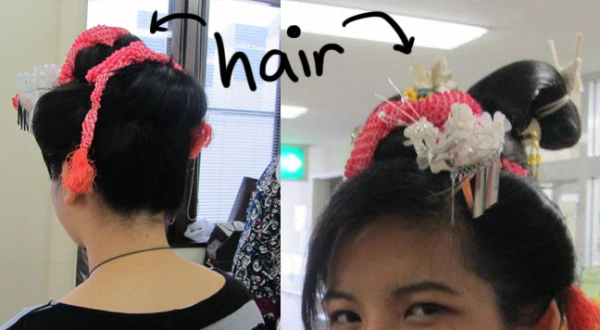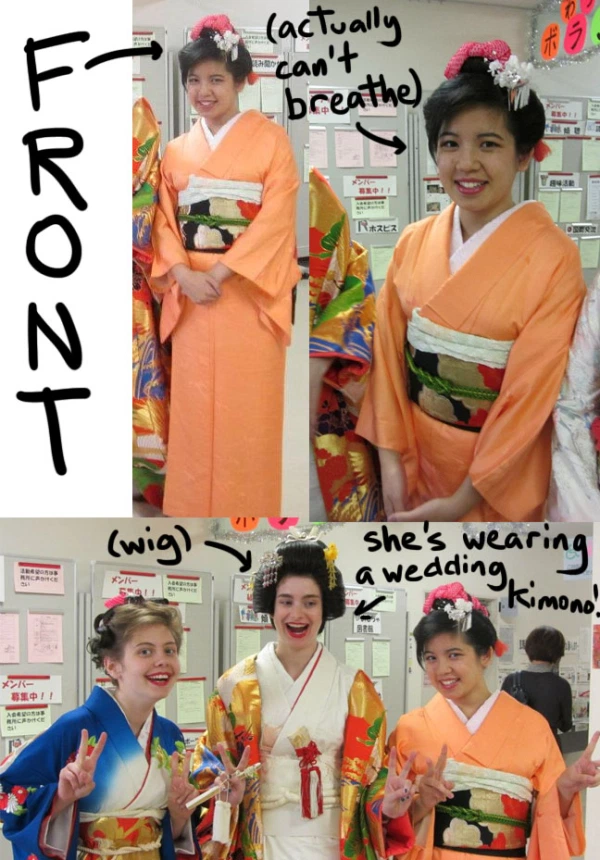More photos from my Japan trip can be viewed at my tumblr!
While we were in Sapporo, our sensei took us to an event where we were allowed to try on the traditional Japanese dress, the kimono. We could get also our hair styled, our makeup done—the whole nine yards, so to speak.
Now, I had always wanted to try on a Japanese kimono. I was even considering buying one in Japan. I had always admired how elegant and pretty they are.
This event changed my mind.
It’s not that the kimono weren’t gorgeous. It’s just that wearing them is complicated. First, I got my hair done—not by one of the younger stylists, but one who looked as though she was in her 50’s or so. And man, did she go at it.
It was all pins, clips, and a giant clump of something that she stuck in my hair. To give it volume, apparently. Basically I had no idea what she was doing.
After getting my hair twisted around for a half hour or so, I was ready to get dressed. Kimono, as we discovered, are very difficult to put on by yourself if you don’t know how. Instead, we all stood around and had ladies dress us. Some kids had two people dressing them at the same time. I, however, had only one:
There’s more to a kimono than just the pretty outer dress. There’s the additional hadajuban and koshimaki worn underneath. There’s the accessories. There’s the flip-flop friendly tabi socks with the geta sandals to match. The most complicated part, however, is the sash known as the obi. The obi can be tied in a variety of styles, varying in complexity and design.
The lady helping me happened to like me—I had managed to strike up a conversation in Japanese. She was obviously trying hard to make it look good.
In addition to the main belt, the obi, there’s about ten million smaller ties meant to help support the main one.
So after much effort and consternation, I was finally dressed. I approached my classmates…

Again indeed.
Apparently I was dressed very traditionally, though, evidenced by the fact that our 60-something sensei jumped me after I was done:
I was only able to wear the kimono for about 20 minutes, though—there were other gaijin waiting for their turn. Still, I managed to snap some photos!
Wearing the kimono was a ton of fun—but it was definitely more complicated than, say, a Vietnamese ao dai. Buying a kimono can also run you hundreds and hundreds of dollars, especially when you’re looking for a full set. Wedding kimonos can easily hit $10,000 or more. It’s possible to save money by buying used, but with the kimono, undergarments, geta, tabi… hell, I don’t have the luggage space for that.
Though as one who also brought home a ton of Engrish t-shirts, I have no room to talk.

